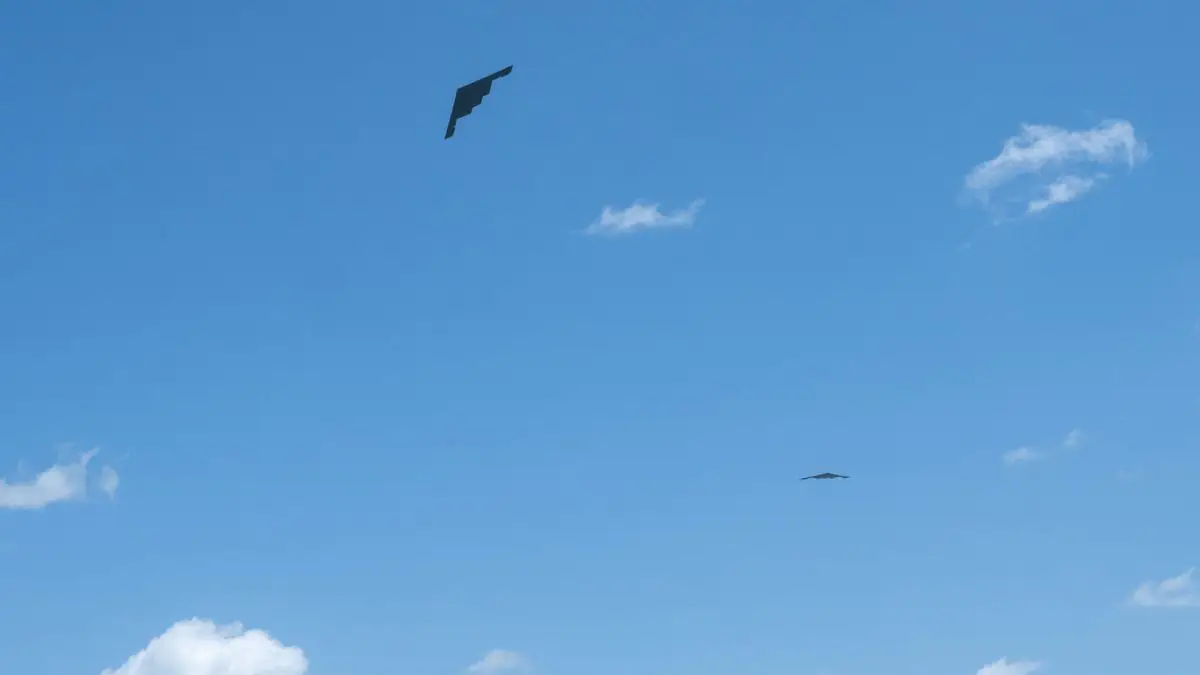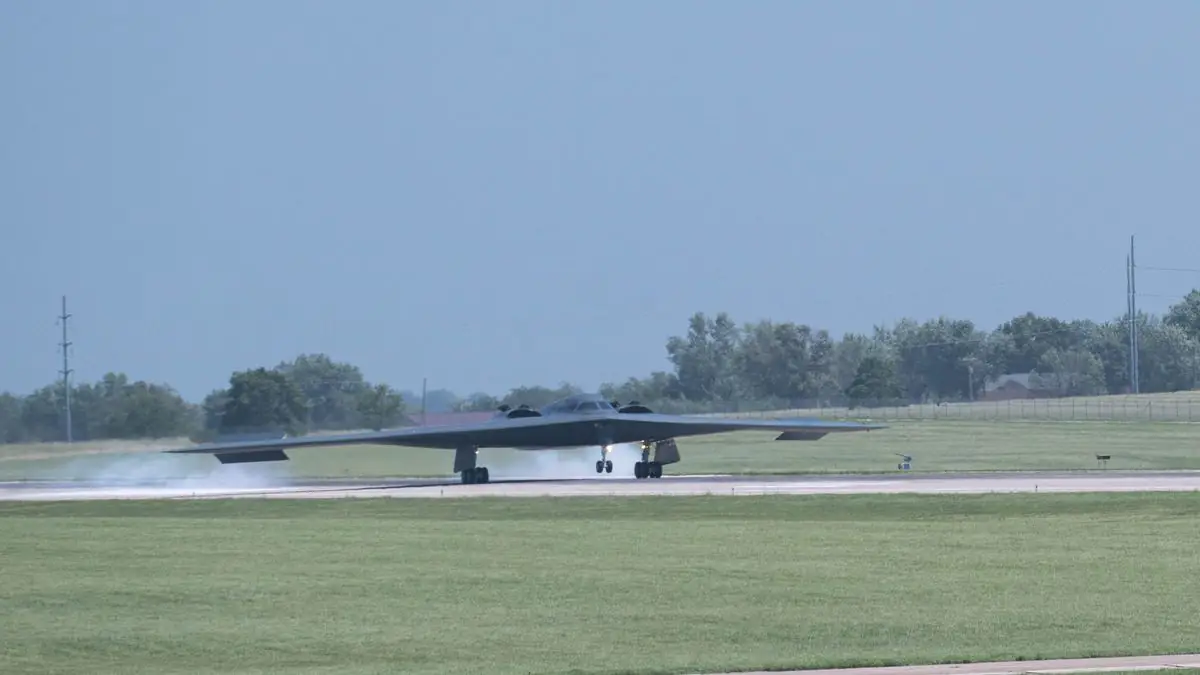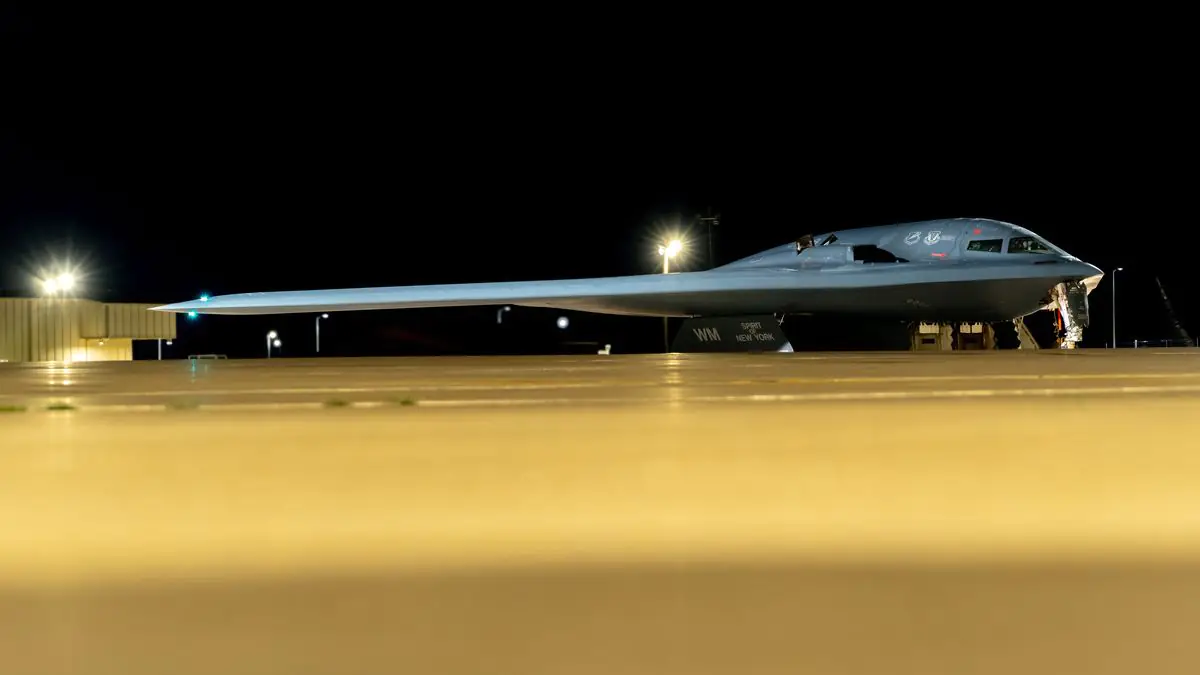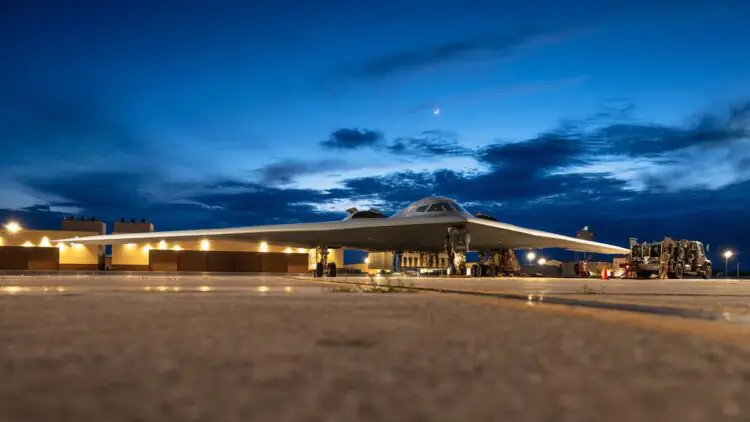The U.S. Air Force has announced a series of software upgrades for the B-2 Spirit stealth bomber aimed at improving its communications systems and enhancing survivability. These updates are expected to be carried out on an ongoing basis to maintain the B-2 fleet’s operational readiness until the B-21 enters service.
The modernization effort may include acquisition programs that modify both hardware and software, according to official statements. The announcement follows reports that seven B-2 aircraft recently carried out strikes on Iranian nuclear facilities using GBU-57 MOP bombs as part of Operation Midnight Hammer.

The B-2 Spirit remains the U.S. Air Force’s primary platform for long-range strategic strikes using both conventional and unconventional weapons. The fleet is set to undergo continued modernization to ensure it stays “competitive” at least through the early 2030s, when the B-21 Raider is expected to begin replacing it. The Air Force currently operates 19 B-2 aircraft, each of which undergoes an extensive and scheduled maintenance cycle every nine years.
The B-2 Advanced Programs Office is actively assessing emerging threats and identifying the new capabilities needed to address them. These capabilities are then developed by two integrated software teams, each focused on a key area of B-2 modernization: advanced communications and survivability. The advanced communications team is working to equip the bomber with upgraded beyond-line-of-sight satellite communication systems. This enhancement is expected to significantly reduce data transmission time for real-time mission planning and will allow the aircraft to send and receive both voice and data simultaneously.

The survivability team is focused on improving the B-2’s low-observable materials to reduce radar visibility and enhancing the aircraft’s situational awareness in contested environments. These upgrades are intended to give the crew a more current and accurate picture of the battlespace, allowing them to adapt quickly and operate more effectively.
In parallel, broader modernization efforts are underway across the B-2 fleet, with the centerpiece being the Spirit Realm 1 (SR1) initiative. SR1 involves integrating an open mission systems architecture, along with updated software, sensors, and weapons, all aimed at improving the B-2’s survivability and combat performance.
The phased software releases may also extend to the B-2’s sensor systems, though details about the specific upgrades and how many aircraft have undergone the changes remain undisclosed. In addition to software updates, the modernization process includes a full inspection of the B-2’s electrical and mechanical systems, as well as the complete removal and reapplication of radar-absorbing materials to restore the aircraft’s low observable (LO) capabilities.

The U.S. Air Force emphasizes that the B-2 Spirit is not only a historically significant bomber, but also remains relevant for future missions despite its age. Originally developed during the Cold War, the aircraft was designed for deep penetration into heavily defended airspace to independently destroy high-value strategic targets. The B-2 officially reached initial operational capability on January 1, 1997, and made its combat debut during the Kosovo campaign.
Although the B-2 accounts for less than 10% of combat sorties and represents under 1% of the total U.S. defense budget, it is credited with delivering 62% of all munitions dropped. The report does not specify the time frame these figures cover or whether recent strikes on Iranian nuclear facilities are included. Regardless, the modernization and sustainment of the B-2 Spirit remain critical to maintaining U.S. air superiority. It continues to serve as a relevant and capable platform – one expected to remain effective for years to come.
Read also:
Source: theaviationist









